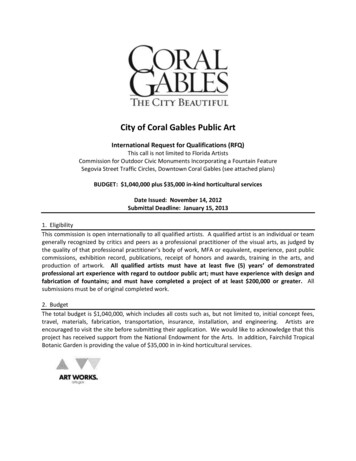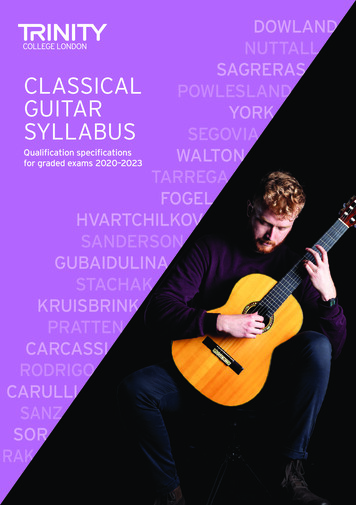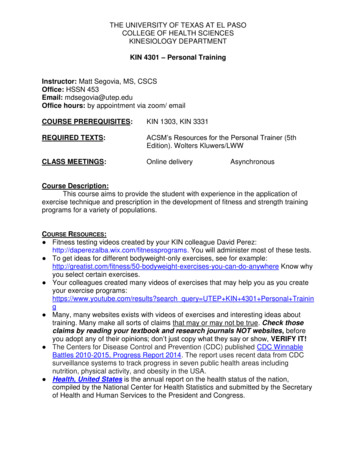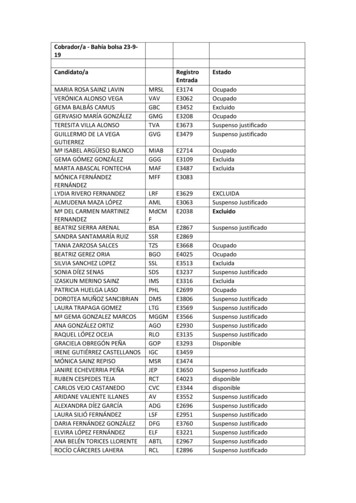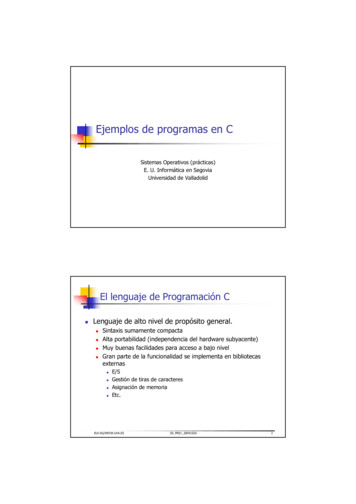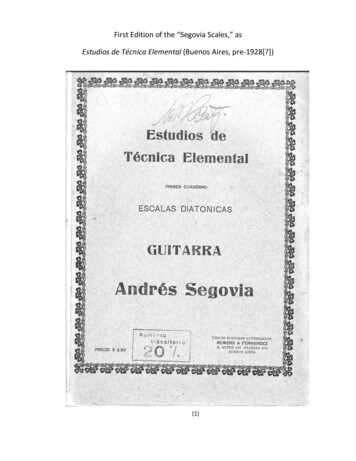
Transcription
First Edition of the “Segovia Scales,” asEstudios de Técnica Elemental (Buenos Aires, pre-1928[?])(1)
An English translation of Andrés Segovia’s introduction to his Estudios de Técnica Elemental, PrimerCuaderno: Escalas Diatónicas para la Guitarra (Buenos Aires: Romero y Fernández, [pre-1928]), byCharles Postlewate, Marisa Herrera Postlewate, and Alfredo Escande.The thoughtful musician who reviews thehistory of the guitar from its beginnings would besurprised by the lack of a reasonable system ofstudies and exercises in a connected sequence,through which the student may progress from thevery beginning to the highest level of theinstrument. This lack of method could be blamed,perhaps, on the two or three names in which theguitar is summarized in the best of its spirit—Sor,Aguado and Tárrega. If they were to be forgiven,especially Sor and Tárrega, it would be because ofan admirable reason: having devotedly investedtheir hours in creating the only valued works thatthe guitar possesses today. Aguado was concernedwith the teaching of a permanent method, an effortthat was not a total waste. His didactic work is ofgreater value than his diminished output as acomposer, although his School of the Guitar is aninorganic set of studies without a progressivelogic. It is certainly valid for those who havepassed the elementary stages and have achieved anadvanced level of playing. But, the beginningstudent will find himself helpless with this book;the beautiful lessons that comprise a part of thismethod will sound good to the student, but areuseless in training his fingers; and he willneed a Doctorate for the other lessons.Of the three mentioned names, only Tárrega—who admirably transformed the guitar into asensitive instrument—could have best written awork in which he would have effectively broughttogether the breadth of his talent and theknowledge of his experience. With such a book hecould have advised with the same advantage anddiscretion as he advised during his lifetime; and, hecould have explicitly stated his intentions as ateacher in an indisputable testimony that wouldhave proven to be a fertile service for the distantfuture of the guitar while, of equal importancetoday, he could have dispelled the many falsefollowers who incompetently teach in his name.We therefore see that the technique of ourbeautiful instrument has not yet had its definitestructure and believe that it is up to us to found it.No one has wanted to leave traces of his first stepson the guitar, as if he feared to reveal to the studentthe mystery of his own apprenticeship, or as if hehad never studied at all. We, on the other hand, areextraordinarily pleased to establish this structure,in order to help, by using examples of the problemsthat we have overcome, with the complete development of the artistic possibilities of the student.In order to obtain a firm technique on the guitar, one should not abandon the patient exercise of scales.Practicing scales two hours a day will correct poor hand positions, gradually increase the strength of thefingers and prepare their joints for later studies of speed. Thanks to the independence and flexibilitygained by the fingers, one can quickly gain a quality that is difficult to possess later: a physically beautifultone; and I say “physically” because the tone and its infinite shadings are not the result of stubborndetermination, but rather the innate excellence of the spirit.To get the most from the following exercises, play them strong and slowly at first and then lightly andfaster. One hour of scales will be of more benefit than many other strenuous, and frequently unproductive,exercises, and will succeed in solving a greater number of technical problems in less time.ANDRÉS SEGOVIANOTE: Other exercise books will appear successively with progressive studies. The next will consist of 20 different formulasof simple and double arpeggios.(2)
(3)
(4)
(5)
(6)
(7)
(8)
(9)
(10)
the beautiful lessons that comprise a part of this method will sound good to the student, but are useless in training his fingers; and he will need a Doctorate for the other lessons. Of the three mentioned names, only Tárrega —who admirably transformed the guitar


